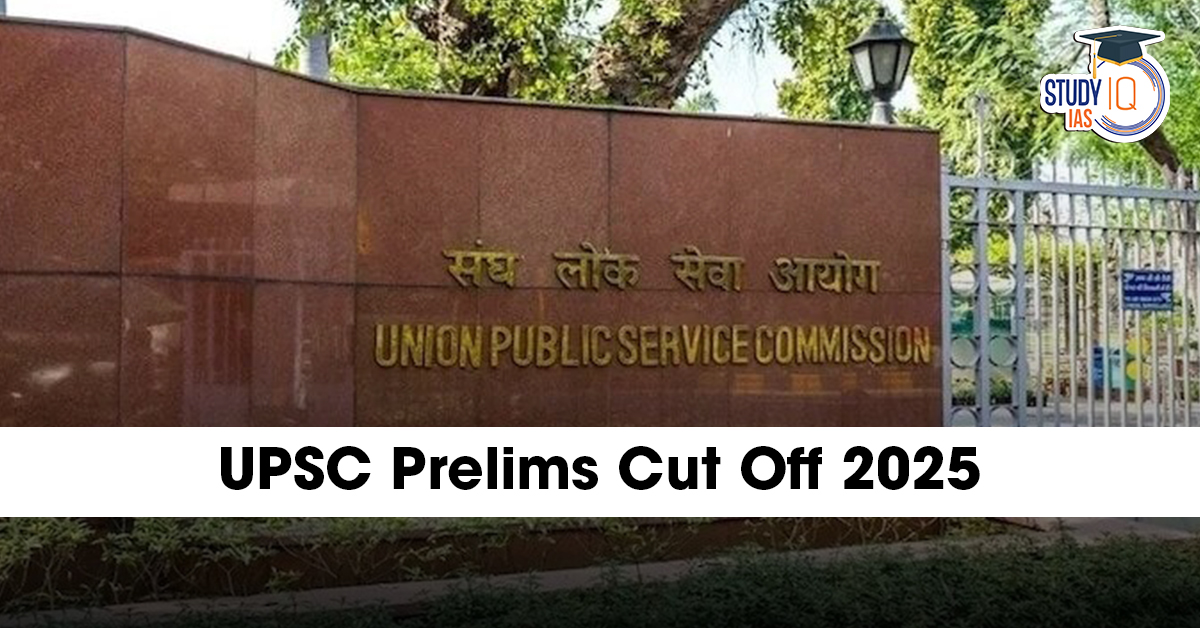Table of Contents
The UPSC Prelims 2025 Cut Off plays a decisive role in the selection process of the prestigious Civil Services Examination conducted by the Union Public Service Commission (UPSC). The cut-off marks serve as the minimum benchmark that candidates must achieve to qualify for the next stage of the exam — Prelims, Mains, or the Personality Test.
In this article, we bring you the UPSC Prelims 2025 Expected Cut Off, along with a comprehensive analysis of UPSC Cut Offs for the last 5 years. Learn about factors influencing cut-offs, tie-breaking rules, category-wise data, and more.
Check here: UPSC Prelims 2025 Result
UPSC Prelims 2025 Cut Off Marks
The expected UPSC Prelims 2025 Cut Off for the General category is likely to remain between 85 to 90 marks, depending on the difficulty level of GS Paper I. For OBC and EWS categories, the cut-off may range from 82 to 87 marks. For the SC category, the cut-off may range from 74 to 78 marks. For the ST category, the cut-off may range from 70 to 74 marks. The CSAT 2025 paper was comparatively tougher when compared to previous years, possibly affecting the overall qualifying rate of Prelims and lowering the final cut-off marks by a bit in all categories.
UPSC Prelims 2025 Expected Cut Off
The UPSC Prelims consists of two papers – General Studies Paper I and General Studies Paper II (CSAT). Only marks in GS Paper I count for the cut-off. Paper II CSAT is only qualifying, which needs a minimum of 33%. Following is the expected UPSC Prelims 2025 Cut Off based on expert opinion, exam difficulty over time, and previous trends:
| Category | Expected Cut Off 2025 |
|---|---|
| General | 85 – 90 |
| EWS | 82 – 87 |
| OBC | 83 – 88 |
| SC | 74 – 78 |
| ST | 70 – 74 |
| PwBD-1 | 68 – 72 |
| PwBD-2 | 65 – 70 |
| PwBD-3 | 40 – 45 |
| PwBD-5 | 40 – 45 |
Key Insights:
-
The General category cut-off has ranged between approximately 75 to 92 marks out of 200.
-
Reserved categories have a relatively lower cut-off, reflecting reservation norms.
-
PwBD categories often have significantly lower cut-offs due to special provisions.
-
The year 2024 saw a slightly higher cutoff for the General and OBC categories due to a moderately difficult paper.
Also Check: UPSC Prelims 2025 Exam Analysis
Factors Influencing UPSC Cut Off Marks
Several factors impact the UPSC Cut Off Marks each year:
1. Exam Difficulty Level
-
A tougher exam generally lowers cut off marks.
-
Easier exams raise cut off due to higher average scores.
2. Number of Vacancies
-
More vacancies generally result in lower cut offs.
-
Fewer vacancies make cut offs more competitive.
3. Number of Candidates
-
Higher competition usually leads to increased cut off.
-
Fewer candidates can reduce cut off.
4. Reservation Policies
-
Different cut offs for various categories ensure inclusivity.
-
PwBD candidates have relaxed cut off norms.
5. Normalization Process
-
UPSC uses a normalization process when multiple sets of question papers are used.
-
This ensures fairness but can affect cut-offs marginally.
How to Use Cut-Off Trends for Preparation?
-
Analyze previous years’ cut-offs to understand the level of preparation needed.
-
Set realistic target marks according to category and expected competition.
-
Focus on clearing the minimum cut-off first, then aim for higher marks.
-
Time management and accuracy are key in Prelims to score above the cut-off.
-
For Mains, a comprehensive understanding and answer writing practice help in crossing cut-off comfortably.
UPSC Prelims Answer Key 2025 with Detailed Explanation
Previous Year Cut Off Marks Trend: Last 5 Years
Here is a summary of the UPSC Prelims cut off trends from the last five years, including 2024. The cut-off marks will be different based on the difficulty of the exam, vacancy, and how the students performed overall that year. Overall, the General category will have cut-offs within the range of 75 to 98, and reserved categories will have a lower cut-off. The table below summarizes the cut-off marks for the different categories for 2019 to 2024, which is beneficial for aspirants to analyze and set expectations for the examination.
| Year | General | EWS | OBC | SC | ST | PwBD-1 | PwBD-2 | PwBD-3 | PwBD-5 |
|---|---|---|---|---|---|---|---|---|---|
| 2024 | 87.98 | 85.92 | 87.28 | 79.03 | 74.23 | 69.42 | 65.30 | 40.56 | 40.56 |
| 2023 | 75.41 | 68.02 | 74.75 | 59.25 | 47.82 | 40.40 | 47.13 | 40.40 | 33.68 |
| 2022 | 88.22 | 82.83 | 87.54 | 74.08 | 69.35 | 49.84 | 58.59 | 40.40 | 41.76 |
| 2021 | 87.54 | 80.14 | 89.12 | 75.41 | 70.71 | 68.02 | 67.33 | 43.09 | 45.80 |
| 2020 | 92.51 | 77.55 | 89.12 | 74.84 | 68.71 | 70.06 | 63.94 | 40.82 | 42.86 |
| 2019 | 98.00 | 90.00 | 95.34 | 82.00 | 77.34 | 53.34 | 44.66 | 61.34 | 61.34 |


 UPSC CSE Interview Schedule 2025: Dates,...
UPSC CSE Interview Schedule 2025: Dates,...
 UPSC EPFO Cut Off 2025 (Expected): Categ...
UPSC EPFO Cut Off 2025 (Expected): Categ...
 UPSC EPFO Answer Key 2025 Out (Unofficia...
UPSC EPFO Answer Key 2025 Out (Unofficia...

























